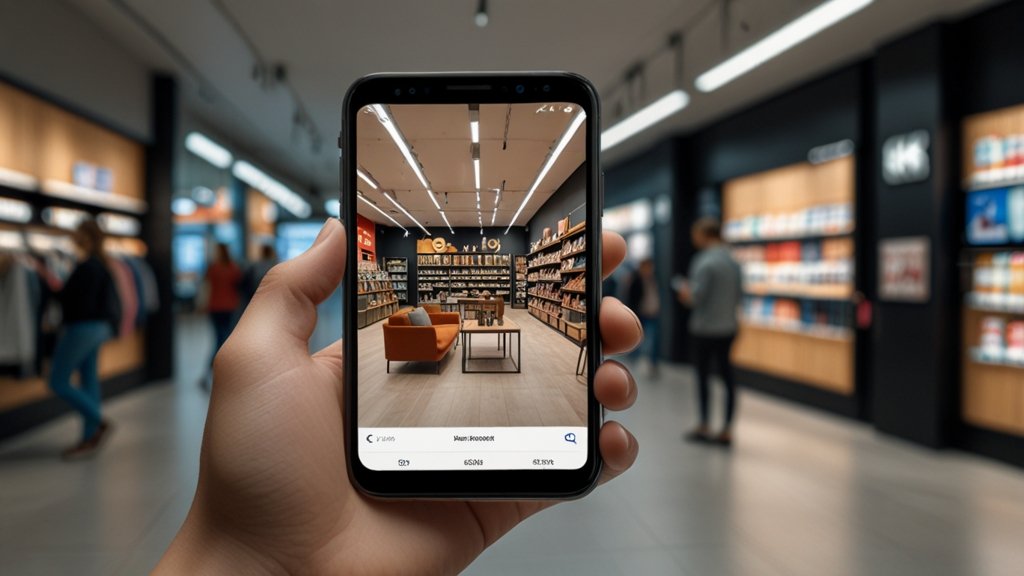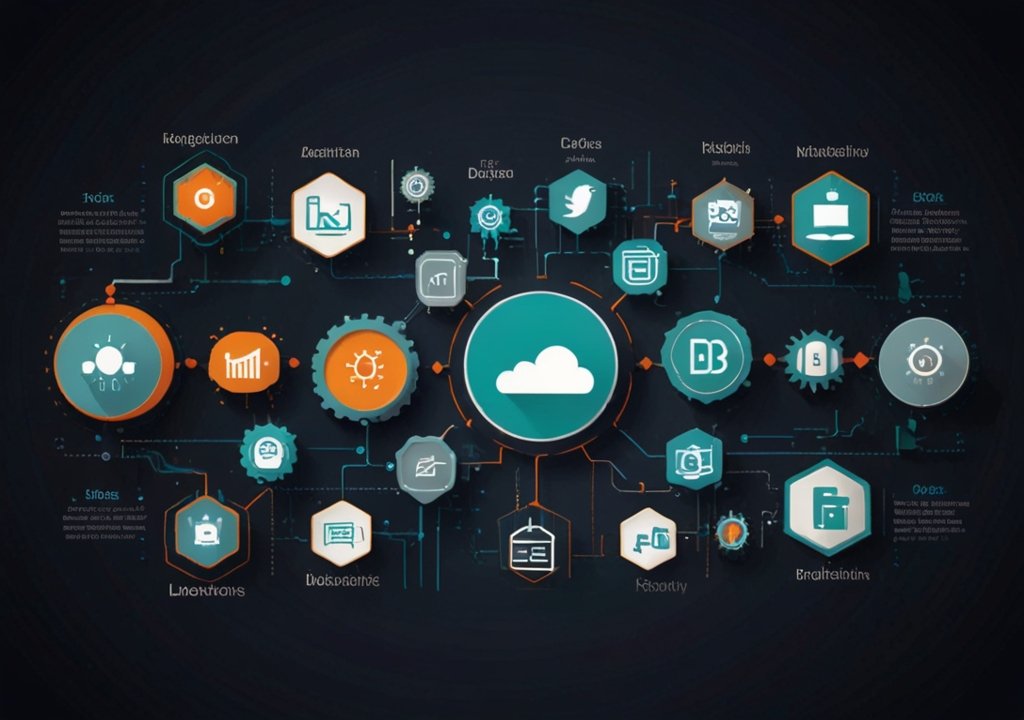Key Takeaways
- Retailers are adopting mobile technologies to streamline operations, enhance service, and raise the standards for convenience and efficiency in-store.
- Mobile devices empower staff with real-time data, fast checkout, and flexible assistance, shaping better shopping experiences for everyone.
- Successful Mobility Solutions for Retail rely on careful planning, ongoing employee training, and a proactive data security and device management approach.
- Integrating secure, scalable, and user-friendly mobile solutions positions retailers for future growth and customer loyalty.
Table of Contents
- Why Mobile Technology Matters in Retail
- Key Benefits for Staff and Shoppers
- Most Popular Retail Mobility Solutions Today
- Critical Considerations When Adopting Mobility
- Data Security and Mobility in Retail
- Overcoming Common Challenges
- Future Trends in Retail Mobility
- Frequently Asked Questions
Why Mobile Technology Matters in Retail
Today’s retail landscape is shaped by shifting customer expectations and rapid digital transformation. In a world where instant information is the norm and seamless convenience drives loyalty, adopting mobile-driven strategies isn’t just practical—it’s essential for sustainable growth. Mobility Solutions for Retail have emerged as a cornerstone for stores seeking to compete on service quality and operational efficiency. This evolution means retailers must meet shoppers exactly where they are: on the sales floor, ready to shop, browse, and buy without unnecessary hurdles or delays.
The explosive growth in mobile-enabled retail transactions is backed by solid research. According to data published by Statista, global point-of-sale transactions conducted via mobile devices are projected to surpass $2 trillion in value this year alone. The persuasive takeaway is that mobile-first strategies bring tangible ROI, driving increased basket size and higher shopper retention. As more stores race to build mobile-ready experiences, keeping track of the most successful implementations becomes vital. For a closer look at the factors fueling these changes, the Retail Dive article on mobile app adoption in retail offers compelling industry data and commentary.
Key Benefits for Staff and Shoppers
- Faster Service, Shorter Waits: The most visible benefit of retail mobility is eliminating long lines and slow transactions. Mobile checkout solutions empower staff to ring up purchases anywhere in the store, significantly reducing bottlenecks at traditional checkout counters. This enhanced efficiency leaves customers with a positive impression and makes them more likely to return for future visits.
- Product Information at Fingertips: With tablets and handheld devices, associates instantly access specifications, features, and alternative product suggestions—right from the aisle. This helps answer customer queries on the spot and enables associates to build trust and close sales faster, becoming true advisors rather than just clerks.
- Real-Time Inventory Visibility: Shoppers expect in-stock assurance, and nothing frustrates them more than being told an item should be available when it’s not. Mobile inventory tools let staff check actual stock levels, initiate restocks, and process returns with a few taps, ensuring inventory data is always current and accurate.
- Seamless Payment Methods: Different shoppers have different payment preferences. With mobile technology, retailers can offer tap-to-pay, wallet payments, and contactless solutions, eliminating friction and accommodating every guest, even during busy periods.
Most Popular Retail Mobility Solutions Today
Retailers benefit from a diverse range of mobile solutions that target pain points across the in-store experience. The rollout of these tools is seldom one-size-fits-all; each solution serves a distinct business function while contributing to overall store agility. Commonly adopted technologies include:
- Mobile Point-of-Sale (mPOS): Mobile checkout devices, whether tablets or smartphones, enable seamless, customer-centric transactions. Staff can move throughout the sales floor and process payments on the spot, freeing up space and reducing the risk of abandoned purchases when lines get long.
- Mobile Inventory Management: Equipped with barcode scanners and connected apps, associates track stock in real time, manage replenishments, and reduce costly errors or out-of-stock events. Efficiency in inventory handling directly translates to more full shelves and happier shoppers.
- In-Store Navigation: Digital maps embedded within custom retail apps guide customers to products, deals, and even their pickup orders. This navigation capability doesn’t just save time; it often increases average purchase value, as customers locate more of what they need without frustration.
- Task Management Tools: Mobile task apps simplify coordinating backroom duties and customer service assignments, allowing for clearer workflows, improved collaboration, and prompt attention to operational needs.
New advances in mobile tech have gone beyond simple transactions—they’re transforming how human and digital experiences intersect. Read the National Retail Federation report on technology transforming the customer experience to analyze these trends and their real-world outcomes.
Critical Considerations When Adopting Mobility
- Rugged, Reliable Devices: The retail environment can be rough. Devices subjected to frequent drops, exposure to food or liquids, and nonstop use require durable construction and protective accessories. Investing in the proper hardware at the outset prevents unnecessary breakdowns and interruptions.
- Software That Grows With You: Choose software platforms that integrate with existing POS, ERP, and CRM systems, while allowing for future planned expansion. This flexibility ensures the solution won’t become obsolete as your business evolves or scales to meet new challenges.
- Comprehensive Staff Training: Technology alone isn’t a silver bullet. Employees need initial and ongoing training to feel comfortable and competent with the systems provided. Retailers who prioritize explicit, user-friendly training materials see better adoption and fewer mistakes.
- Customer Data and Privacy: Building customer trust begins with responsible data collection and transparent privacy practices. Communicate, both in-store and online, how data is handled and protected during every mobile interaction.
Data Security and Mobility in Retail
Every new mobile device introduces potential vulnerabilities if not properly managed. Retailers are responsible for customer and operational data, meaning breaches can be costly and damage their reputation. Research from the Ponemon Institute highlights that 68% of retail IT professionals consider mobile device data loss a pressing concern. Proactive measures include end-to-end encryption, strong authentication protocols, and Mobile Device Management (MDM) solutions allowing remote updates and security enforcement. Following compliance standards like PCI DSS isn’t just required for credit card transactions—it’s also a vital trust signal for shoppers who share their data in exchange for personalized service.
Overcoming Common Challenges
Integrating new technology always presents hurdles. Device theft, unreliable Wi-Fi, and the learning curve for less tech-savvy associates can bring any project to a temporary halt. However, the best retailers approach these challenges strategically. Conducting regular wireless site surveys ensures uninterrupted service. Implementing MDM tools helps monitor devices, lock missing units, and push essential updates without in-person intervention. Most importantly, involving employees as “change champions” supports a smoother transition—staff are more receptive when they can lean on peer expertise, easing nerves and encouraging knowledge sharing. Routine policy reviews foster a culture of security and accountability at every level.
- Robust Wireless Infrastructure: Seamless Wi-Fi across sales floors, backrooms, and outdoor pickup areas is necessary to support mobile devices without lag.
- Mobile Device Management (MDM): Centralized controls provide oversight, improve security, and speed up troubleshooting for each handheld tool.
- Change Champions: Empower a group of associates to lead by example and assist others, strengthening team buy-in and accelerating adoption curves.
- Policy and Procedure Clarity: Periodic refreshers and audits ensure everyone stays current and compliant with the latest regulations and best practices.
Future Trends in Retail Mobility
- AI-Powered Apps: Artificial intelligence is set to become a daily tool for associates and customers. Intelligent recommendations, personalized deals, and AI-driven inventory tasks will make retail more responsive and intuitive.
- Contactless and Cashless: Payment preferences continue to evolve post-pandemic, and retailers are responding with tap-to-pay, QR codes, and fully integrated mobile wallet support.
- Wearables for Associates: The next wave of mobility won’t just sit in employees’ pockets—wearables like smartwatches and voice assistants give staff hands-free access to instructions, alerts, and communication.
As these technologies mature, retailers who stay agile and open to innovation will be best positioned to capture loyalty and drive sales.
Frequently Asked Questions
- What’s the first step in implementing a mobile solution in retail?
- Identify operational inefficiencies and real-world customer pain points, then pilot targeted solutions in high-impact areas to build support and demonstrate clear wins.
- How do you measure the impact of mobile technology?
- Track metrics such as transaction time, customer wait duration, inventory accuracy, and shopper satisfaction to assess tangible outcomes and areas for refinement.
- How often should mobile devices and software be updated?
- To maintain positive performance, user satisfaction, and data security, quarterly software updates and systematic hardware replacements every two to four years are recommended.
YOU MAY ALSO LIKE: Empowering Pediatric Mobility and Care with Gait Trainers, Seating Solution Bath Chairs











